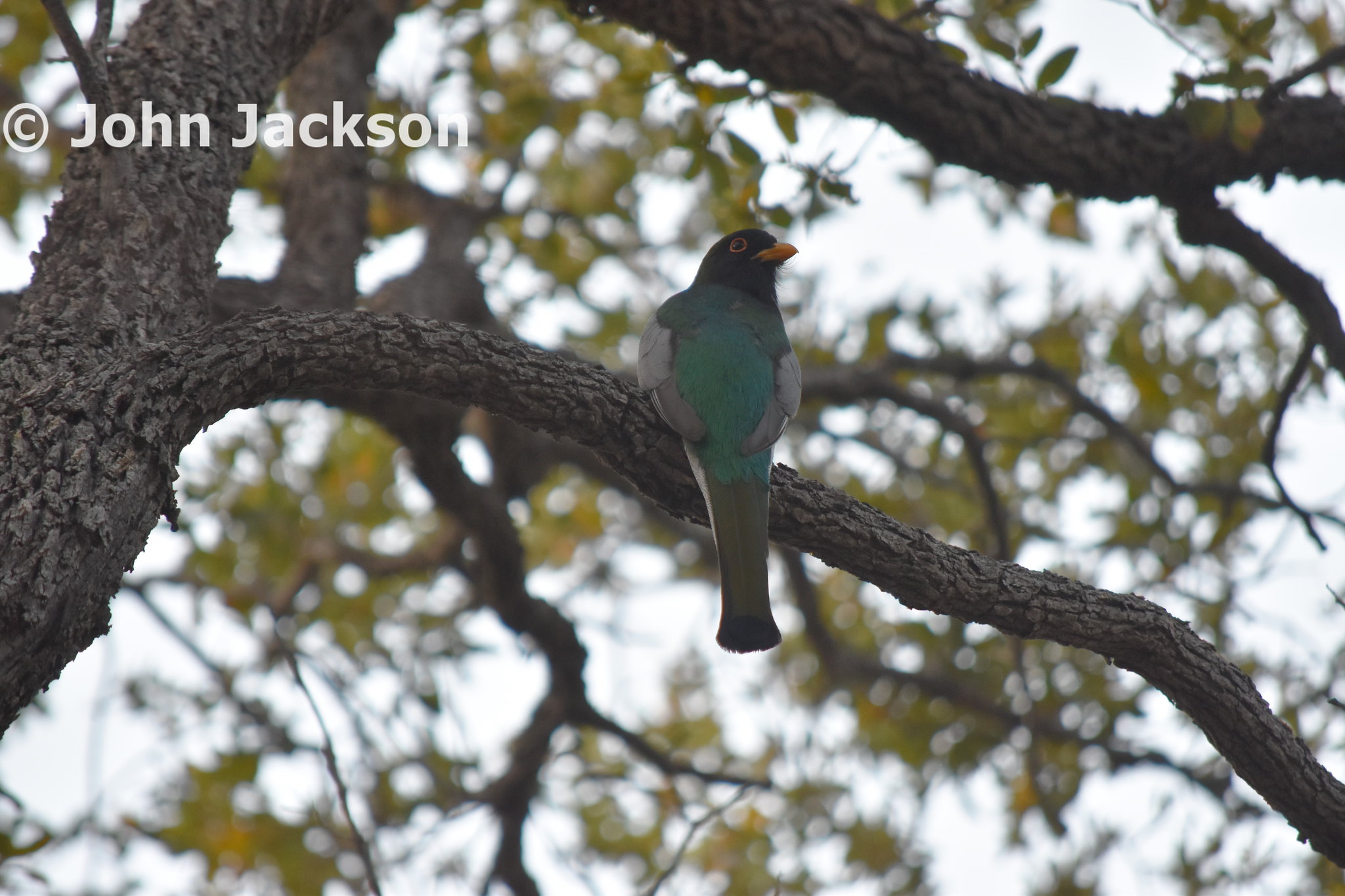 |
| The Elegant Trogon (Trogon elegans) is on of the most colorful birds in the United States. |
Few Birds in North America capture a birders imagination like the Elegant Trogon. Trogons are a birds found throughout the world's tropics. However, A few species can be found in more temperate habitats. The Elegant Trogon is the most Northerly living of trogons. Found mostly in the mountains of Mexico, it's range just barely extends into the United States in a few places. Their presence is a major draw to places like Madera Canyon; just check out the Santa Rita Lodge gift shop: Trogon pins, Native American Pottery depicting trogons, Trogon socks, etcetera. I caught Trogon fever, and took my high school graduation trip to southern Arizona. Not only that, I decided I wanted to finally get into SLRs to get a gorgeous picture of this exotic bird.
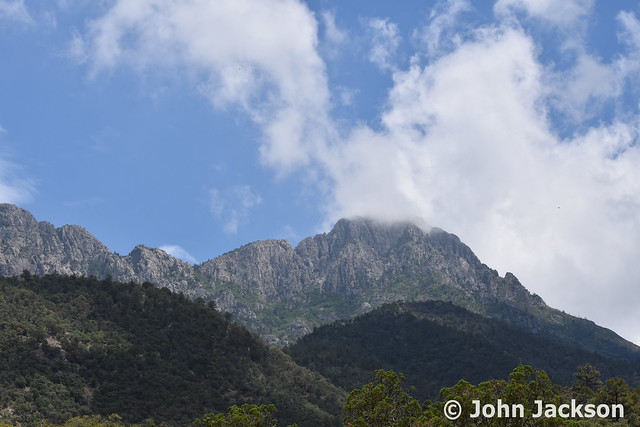 |
| On the day I was here Madera Canyon felt like a "Lost World" with the peaks enveloped in clouds. |
So my first shot at the species was in Madera Canyon, the first really mountainous stop in southern Arizona on the trip. Checking Ebird, the location to be was the Carrie-nation trail, which heads up canyon from the end of the canyon road. Two Sulfur-bellied Flycatchers flew around just above the parking lot. Waking up I saw my first bridled titmouse and saw the beautiful Arizona Sister butterfly drinking from the creek bed. Then from the above came the call of the Trogon. It is an unmistakable sound, which sounds, no joke, exactly like a barking chihuahua. Following the racket up the trail. I finally deduced it was on the hill side, so to get my picture I rushed up the steep slope through the poison ivy. There I set eyes on the bird, but as I lifted my camera he flew off his perch and into the canopy. After picking my way down the hill I heard the bird further away. The next year when I came back, I was talking to a guy staffing the Santa Rita Lodge gift shop and told this story, I learned this particular bird has befuddled many a birder, leading them to the top of his territory, calling the whole way, only to fly silently back to the bottom and resume calling; while being easily observed by average hikers. We then had a quick conversation on why the bird behaved this way, was it messing with birders, or was some behavior of birders actually more disturbing than people wondering by having a conversation. I figured someone shushing sounds a little like a Jay.
 |
| Hoodoos in Chiricahua National Monument, Arizona. These rock formations look very different than those commonly seen in the Colorado plateau region to the north. I live the green on the dark rocks, gives it an "exotic" look |
After my failed attempt to get my sought after picture in Madera, I headed east to the Chiricahua Mountains. This little mountain range has some truly spectacular hoodoos, and a great variety of Mexican Birds. Trogons appear to be pretty uncommon on the Western side of the range, in the national monument. However, on the eastern side, Ebird indicated that Cave Creek Canyon was where trogons could be seen. Driving over the top of the Chiricahua Mountains is a highly recommend place to go birding, on the way up I got the red-face warbler. The descent into Cave Creek was a bit rough and steep and wore the breaks off the car. The place to go is the South Fork of Cave Creek, an abandoned washed out road. On the journey up an A-10 Thunderbolt flew through the canyon at low altitude. Eventually though I turned around to head off to the Cave creek lodge, which has feeders that bring in many species. Talking to them they said the Trogon had been sited in the South fork that day so I went back. Around a pair of cabins (which I joked would be a great place to own, and have Trogon nest boxes) the barking began and a male Trogon flew down to road at me. I finally got my Trogon shots I had wanted, but they were far from perfect.
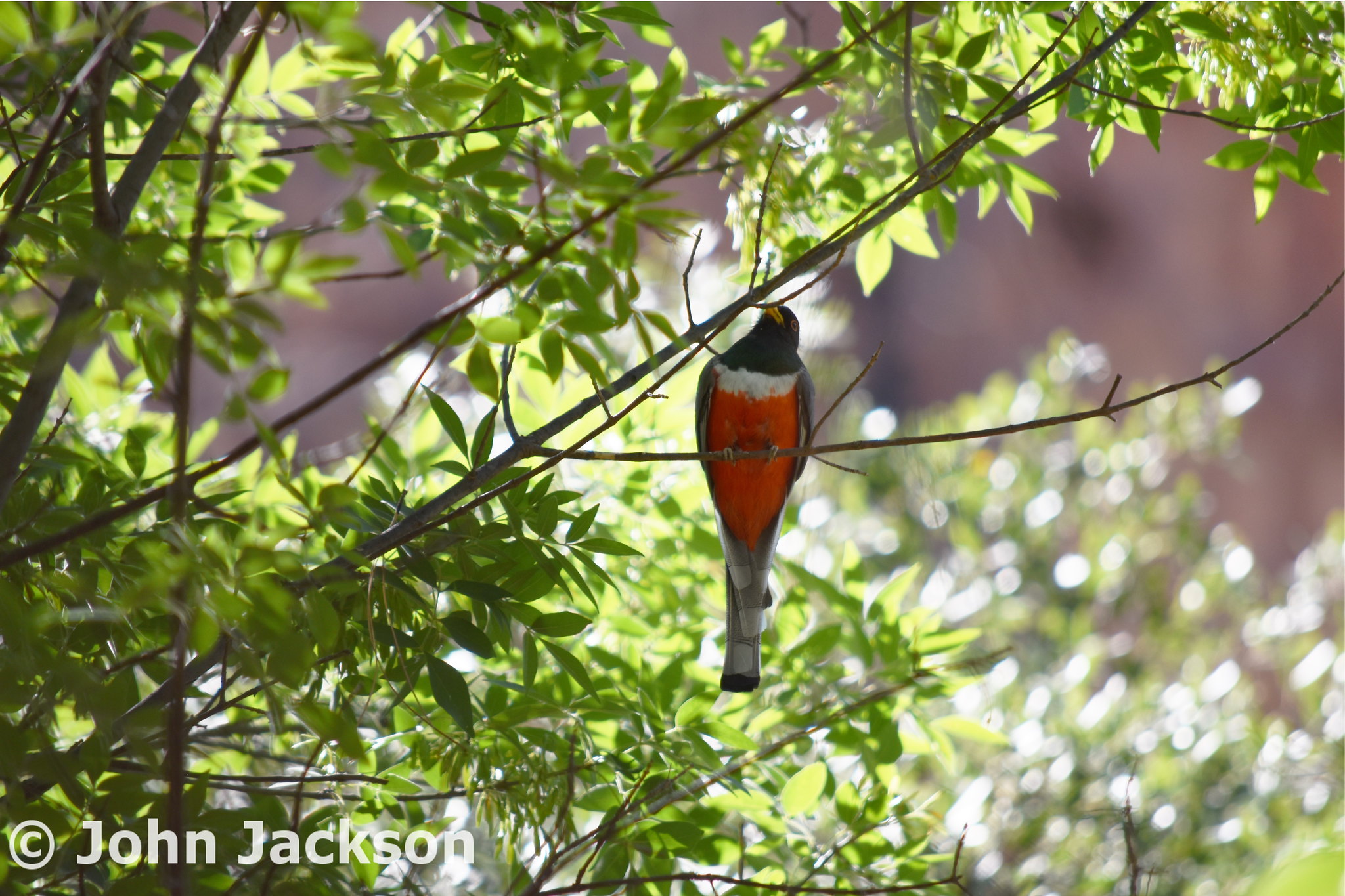 |
| An Elegant Trogon Perched above me in the South Fork of Cave Creek Canyon |
The next year I enrolled in a Desert Ecology class through University, and headed back down for spring break. We got to stay in the Santa Rita Experimental range in Florida Canyon, right next to Madera. Better yet, a Trogon was seen regularly only a few hundred feet from where I was sleeping. I went out every day when I had free time. Yet the Trogon never showed up. Finally, one night I was waiting with one of the TAs in the parking lot where the bird had been seen; we were with a group of birders also looking for it. We ended up discussing the really rare animal of the Santa Ritas, a jaguar which had been detected by camera traps, and was the only Jaguar known to currently be wild in the United Sates. After they left as the sky darkened, the trogon burst across the parking lot calling loudly, disappearing just as quickly into the gloom.
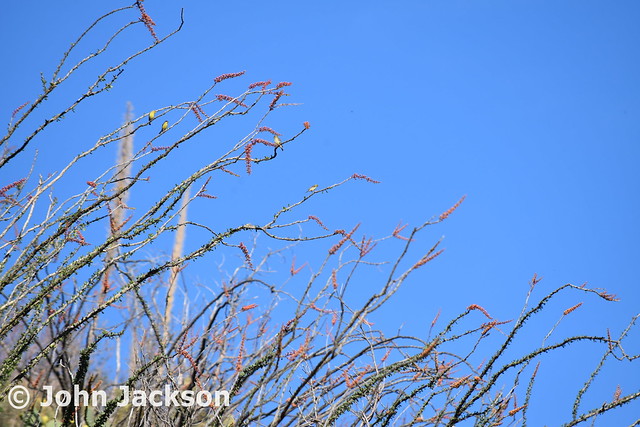 |
| Several Goldfinches Perched on Ocotillo Plants. The Ocotillo may be may favorite plant in the Sonoran Desert. |
It was finally down to the last day of the class, we would be headed up north the next mourning. During the heat of the day I got the ABA rarity, the Black Capped Gnatcatcher, which were down the road in a very rocky wash. As evening approached and a large group of people from the class gathered to get the bird, I finally broke down and tried a recording. Recordings are definitely the “Jedi mind tricks” of birding, although maybe not outright bad, they are ethically muddy for sure. In Madera they are highly discouraged, as they have been known to habituate birds and probably fakes out birders. Ultimately, in my humble and inexperienced opinion should only be used to locate a bird you are having a lot of trouble with, like a Trogon you have been looking for a week. As soon as a particular recording rang out (which I will not share) the bird appeared. I got the camera up and started exposing images. After taking some incredible looking shots I did a quick check. To my horror the photographs were black and white. Somehow the dial has switched to creative. I quickly got it back to regular and took more shots. But the light was fading and High ISO led to some of the images being a little noisy. I took one flash shot, which ended up quite nice, although I felt it was a bit disturbing the bird, although it didn't seem to pass it or birds I have used it on since. In the end I spent a good long while with the Trogon, photography it as it worked it's way from Perch to Perch until it finally flew into the thicket surrounding the creek.
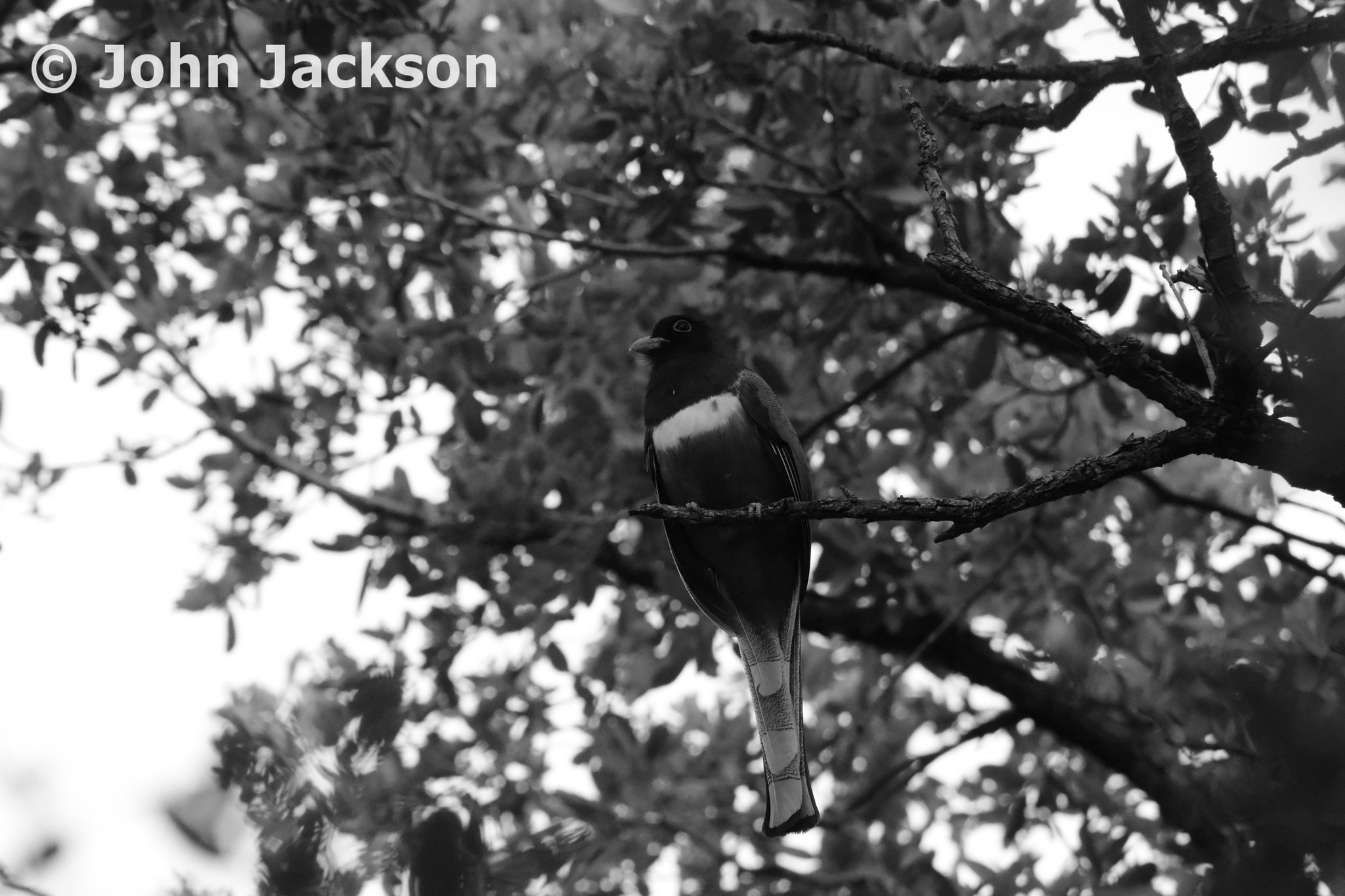 |
| The most colorful bird in North America, in beautiful black and white. It is an amazing shot of a trogon, but sadly is in Black and White. |
The black and white Trogon picture became a bit of a joke, and over time I have come to appreciate my folly. However, I would like to go back and do another photoshoot with this frustrating but exceptional bird.
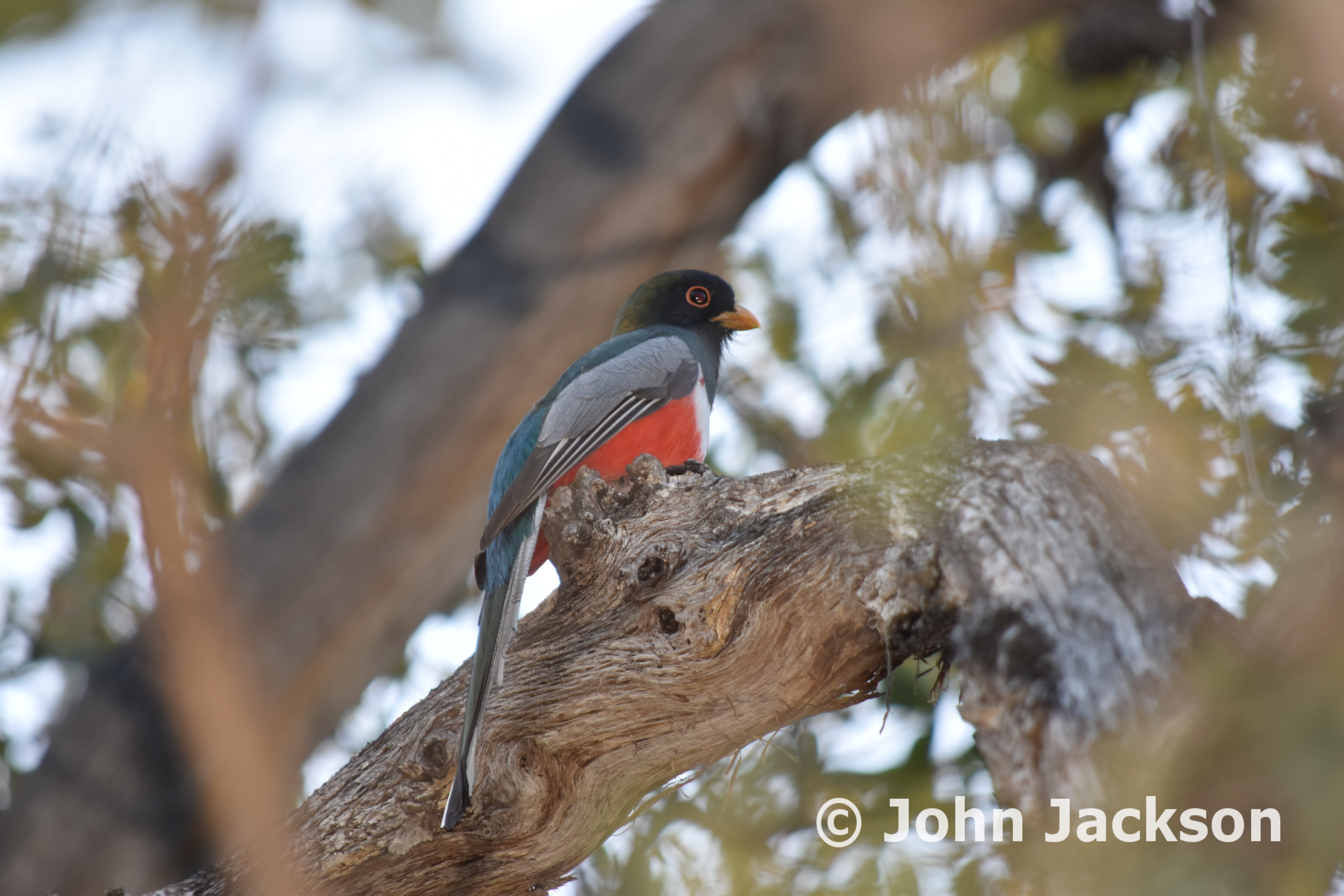 |
| Trogon Photograph taken with my onboard Flash. It turned turned out quite nice. |
Trogon Tips
-listen for and know the trogons call, All of my sightings involved locating the bird by it's call. They disappear very easily if you don't have eyes on them.
-I would discourage using recordings, for three of the 4 times I have seen the bird l, I have not needed them, they are fairly vocal especially when most people are birding in the area so recordings are not necessary.
-When Trogons Perch they stay for about 30 seconds moving their head around, then fly off. This gives you the opportunity to get several shots with the head at different angles.
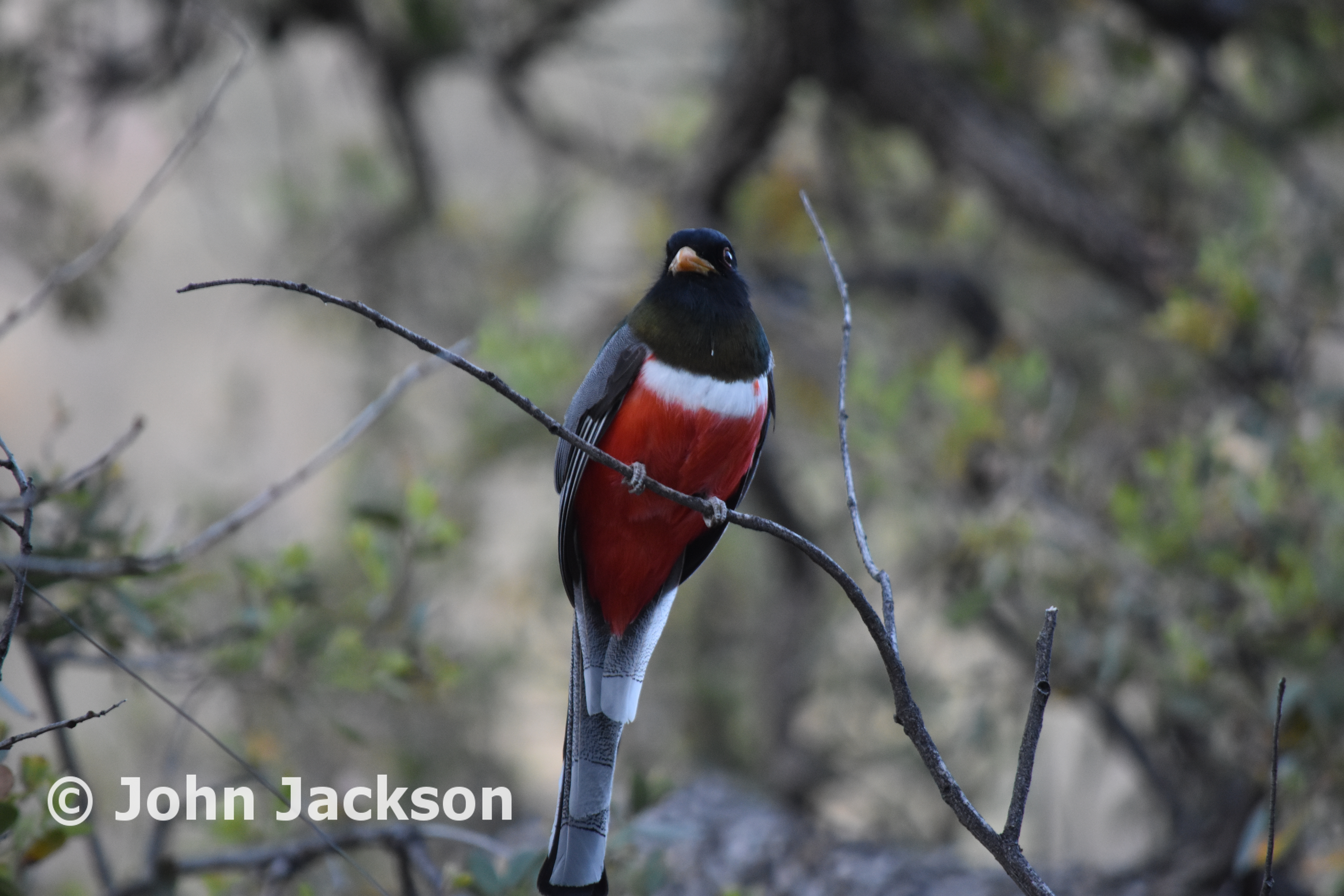 |
| A nice picture taken strait on with the bird. This was among the last images before it took off into the gloom of dusk |








No comments:
Post a Comment